Auschwitz trip brings horrors of Holocaust to life for Mansfield students
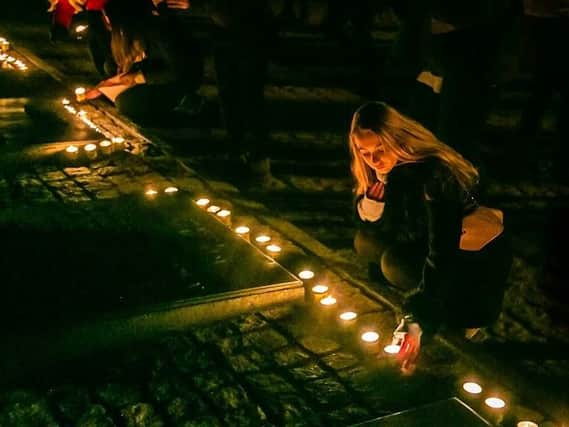

An enormous container of pots and pans, the size of a skip.
A pile of spectacles.
Shoes, suitcases, dresses, children's jumpers, knives and forks.
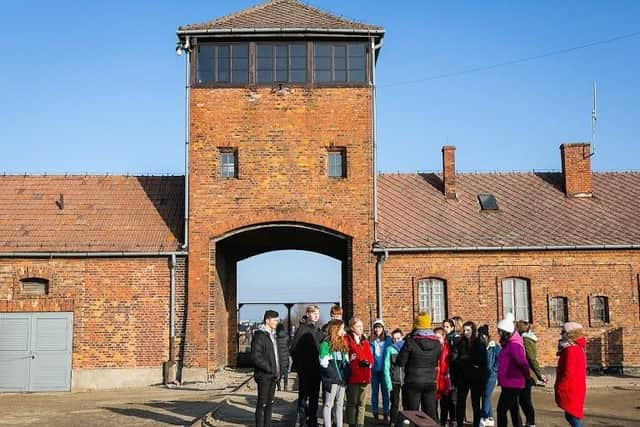

These objects are all that is left of entire families, communities and lives that were systematically destroyed by the Nazi regime.
Advertisement
Hide AdAdvertisement
Hide AdStudents from post-16 centres in Mansfield are visiting the museum that stands at the former concentration camp, Auschwitz-Berkenau for the day.
They have been flown to the museum in Poland by the Holocaust Educational Trust, which aims to educate the next generation about the horrors of the Holocaust.
The students then bring back their knowledge and become ambassadors for the trust.
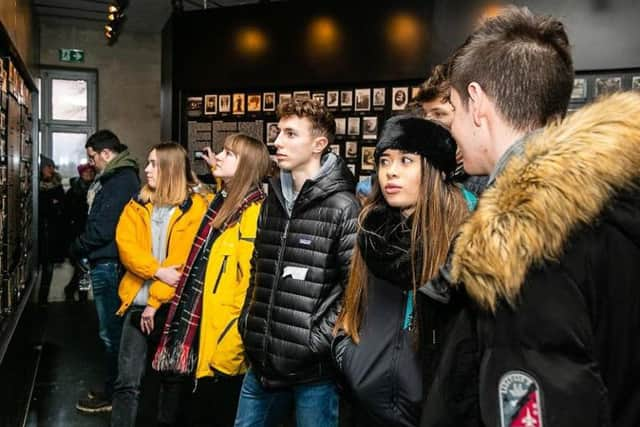

Over 70 years have passed since the Holocaust, but the museum stands as testimony to the depths that humanity sank to during the Second World War, and the strength that was demonstrated by the prisoners.
Advertisement
Hide AdAdvertisement
Hide AdStudents from Quarrydale Academy, Ashfield Post 16 Centre, Outwood Academy, Brunts Academy and Queen Elizabeth's Academy, joined 200 students and teachers from across the East Midlands as part of the trusts's lessons from Auschwitz programme.
It is hard to understand the scale of the operation that took place at the former concentration camp, between 1940 and 1945.
Although the Jewish population was the main target of operations, people of colour, gay people, Roma (gypsies) and disabled people were also sent to Auschwitz-Berkenau.
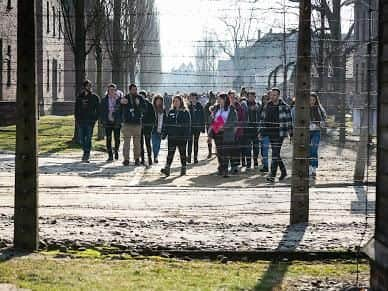

Over 1.1 million Jews from all over Europe were murdered at Auschwitz-Berkenau.
Advertisement
Hide AdAdvertisement
Hide AdAnd the museum that now stands at the former camp really humanises that number.
The tour begins at Oswiecim, the town close to both camps, where students learned how the devastating events of World War Two changed the town, and peoples lives.
After that, students and teachers are taken to the first former camp, Auschwitz I, which was originally an army barracks.
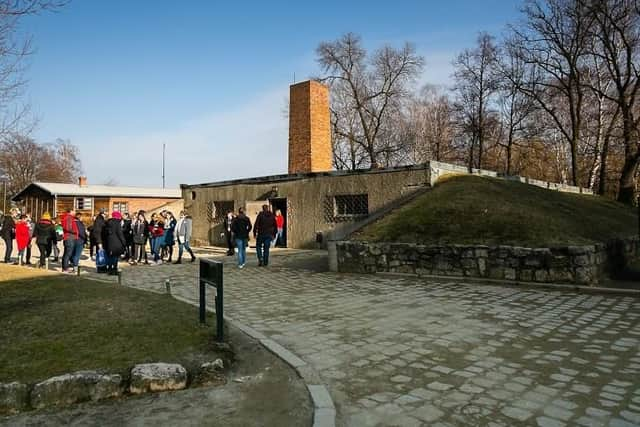

The site on the outskirts of the Polish city of Krakow was turned into a museum in 1947.
Advertisement
Hide AdAdvertisement
Hide AdThe tour is taken around several huts that prisoners would have lived in, where human ashes, people's possessions, and photographs of those who succumbed to a terrible fate are displayed.
In one such hut, children's drawings of are preserved on the walls.
In another, films of ordinary Jewish people going about their lives happily are projected on to the walls - families on holiday, playing football, singing, dancing, worshipping.
On the next floor, audio and subtitles of Hitler's hateful speeches which de-humanised an entire race are played.
It is a jarring juxtaposition.
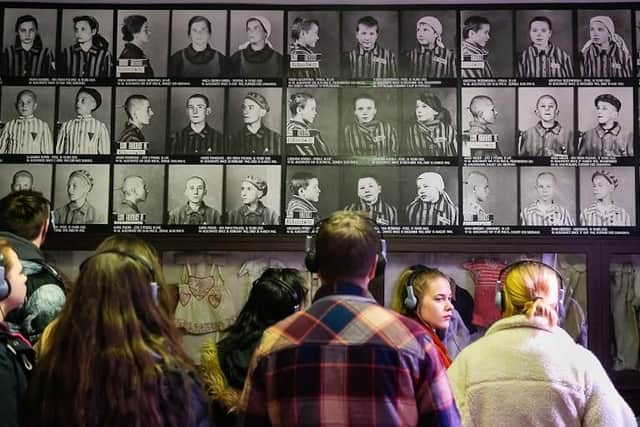

Advertisement
Hide AdAdvertisement
Hide AdStudents and teachers walk the perimeters of the former camp, which is surrounded by high, electric fences.
Finally, the tour is taken silently into the gas chambers where people met their horrific fates.
Auschwitz-Berkenau or Auschwitz II is the last stop.
It is estimated that one million people were murdered at the former death camp.
Much of what was originally there was destroyed by the Nazis to hide evidence of the atrocities that took place there before the allied liberation.
Advertisement
Hide AdAdvertisement
Hide AdThe air feels oppressive and heavy, despite the sun on our backs.
Students walked in the footsteps of of those who arrived at the camps, from the drop-off point, through the shower area, and the room where their heads were shaved - all part of the de-humanisation of the prisoners.
Sophia Stewart, aged 16, a student of Brunts Academy said: "I am overwhelmed at how big it is.
"Even at Auschwitz I we were just confused about how people could do this."
Advertisement
Hide AdAdvertisement
Hide AdSamuel Hickling, aged 16, who also attends Brunts Academy said: "I'm not sure if I can put the experience into words.
"I never understood the scale of what happened until today.
"It's shocking to see how organised it was.
"We are the last generation to be able to speak to survivors.
"It's our responsibility to pass on what happened here to the next generation."
The day comes to an end with a memorial ceremony at the end of the tracks that brought in the prisoners.
Advertisement
Hide AdAdvertisement
Hide AdWe hear poems read out by students, and prayers read by Rabbi Marcus.
As students and teachers leave candles in memory of those who suffered, we take the walk back through the infamous gates to return to our houses and families - a privilege denied to many.
Why were students taken on this trip?
Since 1999, over 37,000 students and teachers have taken part in the Holocaust Educational Trust's Lessons from Auschwitz Project.
Based on the premise that 'hearing is not like seeing', this four-part course explores the universal lessons of the Holocaust and its relevance for today. The LFA Project aims to increase knowledge and understanding of the Holocaust for young people and to clearly highlight what can happen if prejudice and racism become acceptable.
Advertisement
Hide AdAdvertisement
Hide AdThe charity's aim is to educate young people from every background about the Holocaust and the important lessons to be learned for today.
The Trust works in schools, universities and in the community to raise awareness and understanding of the Holocaust, providing teacher training, an outreach programme for schools, teaching aids and resource material.
One of the Trust's earliest achievements was ensuring that the Holocaust formed part of the National Curriculum for History.
Karen Pollock MBE, chief executive of the Holocaust Educational Trust said: “The Lessons from Auschwitz Project is a vital part of our work, allowing young people to learn about the Holocaust in a way they cannot in the classroom. The visit enables young people to see for themselves where racism, prejudice and antisemitism can ultimately lead and its importance is demonstrated by the inspiring work students go on to do in their local communities. ”
"It is a place of absence and a place of loss."
Advertisement
Hide AdAdvertisement
Hide AdI can't really put into words the atmosphere of at Auschwitz-Berkenau, writes Danielle Andrews.
I have never been anywhere where the air is heavy and despair clings to the walls.
Despite the sun on our backs, there is a chill in the air.
I went into Auschwitz-Berkenau expecting to be sad and moved, but I wasn't expecting the guilt of walking out of there, back to my home and my family.
As the sun went down, we all gathered for the memorial service by Rabbi Marcus, who told us that if we were to observe a minute's silence for every victim of the Holocaust, we would be silent for two years.
Advertisement
Hide AdAdvertisement
Hide AdAnd Rabbi Marcus was correct when he said that what you don't see in Berkenau that has the most profound effect.
It is a place of absence and a place of loss.
The day was a real roller coaster of emotions - anger, sadness, horror, and, upon seeing a room full of children's clothes and pictures - profound grief.
The trip really put into perspective how privileged I am.
I am impressed by the students on the trip, who are intelligent, eager to learn and determined not to let the past repeat itself. If these students are the future of our town, I am looking forward to a bright tomorrow.